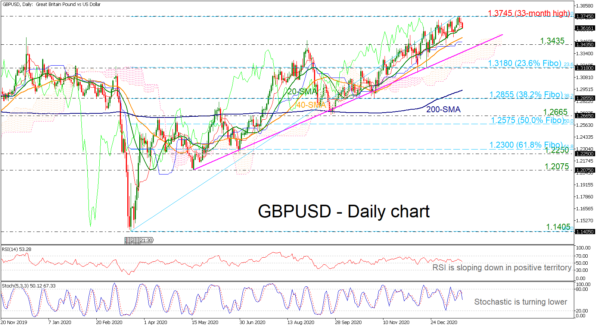GBPUSD is retreating somewhat after the pullback off the 33-month high of 1.3745 in the preceding week. Currently, the pair is flirting with the 20-day simple moving average, remaining well above the long-term uptrend line, which has been holding since May 2020.
Technically, the RSI indicator is pointing slightly lower in the positive territory as well as the stochastic oscillator, which posted a bearish crossover within the %K and %D lines below the overbought zone. However, the red Tenkan-sen line is still hovering above the blue Kijun-sen line, indicating more gains.
Should selling forces strengthen, the 40-day SMA at 1.3510 is coming next ahead of the 1.3435 support, which overlaps with the Ichimoku cloud and the ascending trend line. A break below these obstacles could open the door for a neutral bias, resting around the 38.2% Fibonacci retracement level of the up leg from 1.1405 to 1.3745 at 1.3180. Clearing this level too, the 200-day SMA at 1.2940 could come in the spotlight.
Alternatively, a close above the multi-month peak of 1.3745 will brighten the boarder outlook, pushing the price towards the 1.4345 key level, which has been tested during the January 2018 period.
In brief, GBPUSD is facing a weakening bullish bias in the very short-term, where a drop below the rising trend line is expected to enhance selling interest.
















